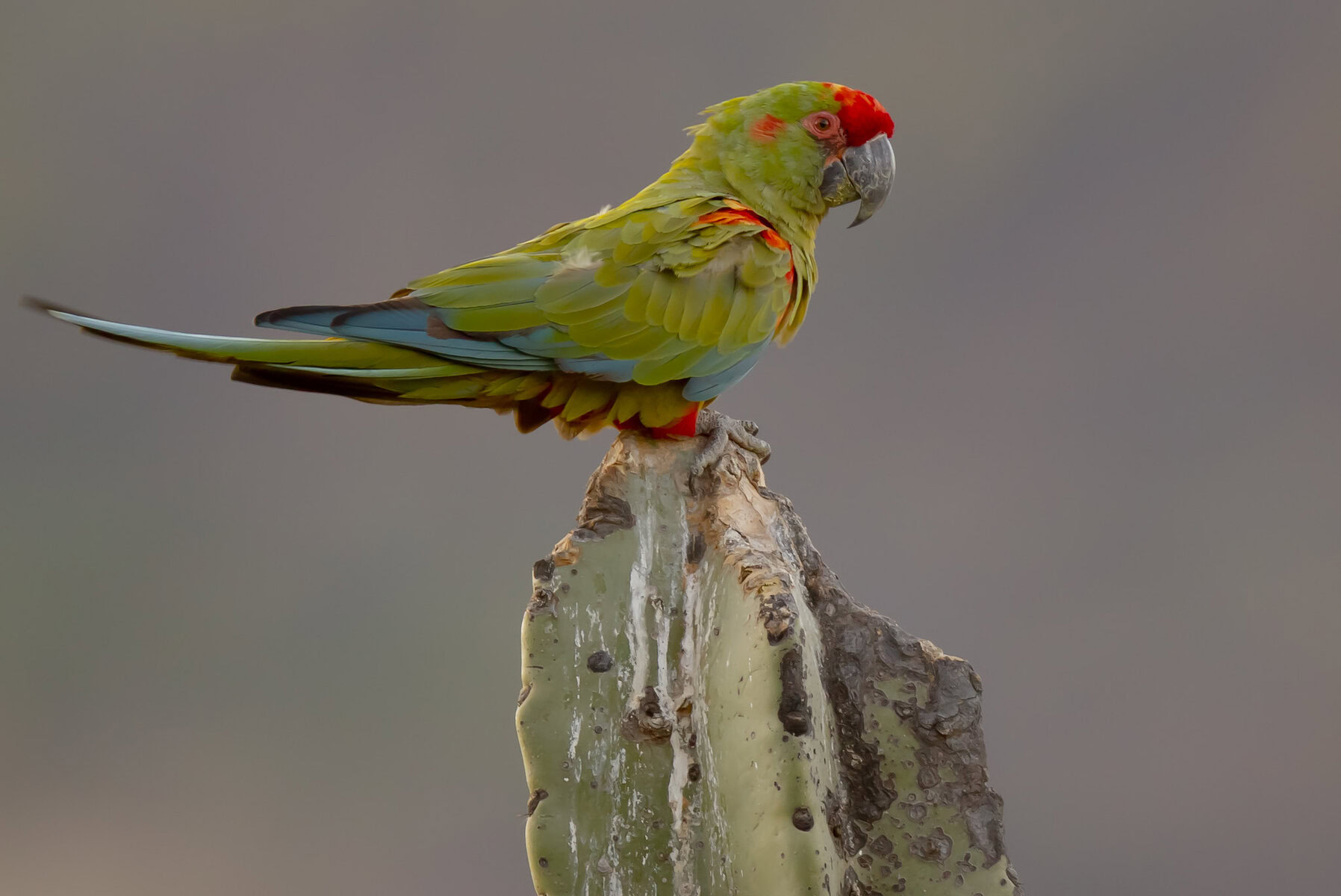
reasonstobecheerful.world
Farmers Are Creating a Brighter Future for Bolivia’s Red-Fronted Macaws
We stood on the rocky shore of the Mizque River in central Bolivia, binoculars trained on the towering cliff before us. The summer sun beat down as we scanned for birds. “There,” whispered my nine-year-old son. “A pair is coming.”
The red-fronted macaws were worth the wait. Teal wingtips spread, green and yellow plumage vivid against red crowns, the striking birds sailed directly overhead. After they disappeared into the forest, we turned our binoculars back to the cliff to watch a dozen more pairs flitting in and out of their nests.
Red-fronted macaws are found nowhere else on earth except Bolivia’s dry, forested Andean valleys. Like many other members of the parrot family, they have suffered from habitat loss, illegal capturing for the pet trade and conflicts with farmers who kill them for stealing crops. In 2013 only an estimated 600 red-fronted macaws remained. While the latest census from 2021 estimates nearly double that number now soar through the valleys, these tropical birds are still critically endangered according to the International Union for Conservation of Nature (IUCN).
Perched red-fronted macaw. Credit: Paul B. Jones / Armonía
Luckily, innovative conservation agreements that improve rural landowners’ livelihoods are creating a brighter future for red-fronted macaws as well as the forests they depend upon. Many Bolivian farmers now see the bird as a boon rather than a burden, and a valuable resource worth safeguarding.
The cliff we were watching is the perfect example. Located near three Quechua communities about 200 kilometers southeast of the city of Cochabamba, it’s home to the largest-known breeding colony of red-fronted macaws. Locals used to take chicks from their nests and sell them as pets to Europeans or Americans.
Then in 2006, a Bolivian bird conservation organization, Armonía, showed the communities they could make more reliable income by offering tourists the chance to watch these beautiful birds. They helped the communities set up the 50-hectare Red-Fronted Macaw Community Reserve and build an ecolodge facing the cliff that can house up to 14 guests. In 2023 the communities earned $25,000 in profits from the ecolodge. Plus, local families now help monitor wildlife, build new nest boxes and restore habitat within the reserve.










